On your Windows 11 or Windows 10 system, you can easily check if your PC supports UEFI or BIOS and can boot into UEFI or BIOS firmware depending on your PC manufacturer. You can update BIOS if the need arises. And in cases where you may have issues, you can reset BIOS settings to default values or even roll back the BIOS version. In this post now, we take a look at how to use BIOS settings on Windows computers.
The BIOS (Basic Input/Output System) is also known as “Setup”. If you can successfully boot into BIOS on your device, you can change many basic computer settings, like the boot order, hard drive settings, Fan Speed, system time and date, enable hardware virtualization, create a password for BIOS and more.
How to use BIOS settings on Windows 11/10 computers
Let’s take a look at how to use some basic BIOS settings on Windows computers. We will discuss this topic under the following subheadings in this section:
- How to navigate the BIOS
- How to change BIOS settings
- How to change Boot Order or Priority in BIOS
- How to create a BIOS password
- How to change System Date and Time in BIOS
- How to change Fan speeds and System Voltages in BIOS
- How to Save BIOS settings and Exit.
How to navigate the BIOS
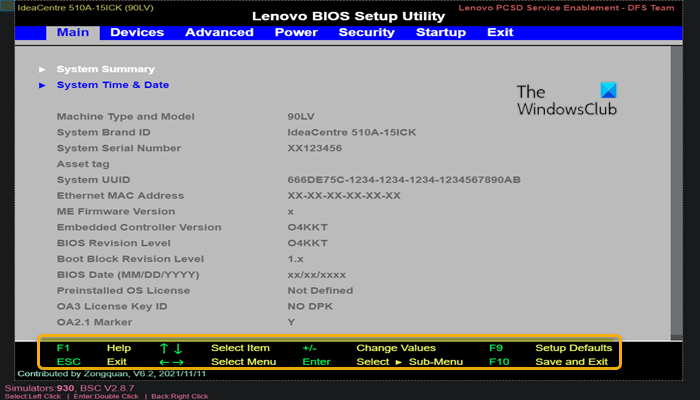
Since the BIOS is tied to a computer’s motherboard, the appearance of each computer’s BIOS will vary slightly depending on the manufacturer. The BIOS menus don’t support mouse input, so you’ll need to use the arrow keys and other computer-specific keys to navigate the BIOS. You can usually find a list of controls in the lower-right corner or at the bottom of the BIOS homepage.
Read: Windows unable to boot into BIOS.
How to change BIOS settings
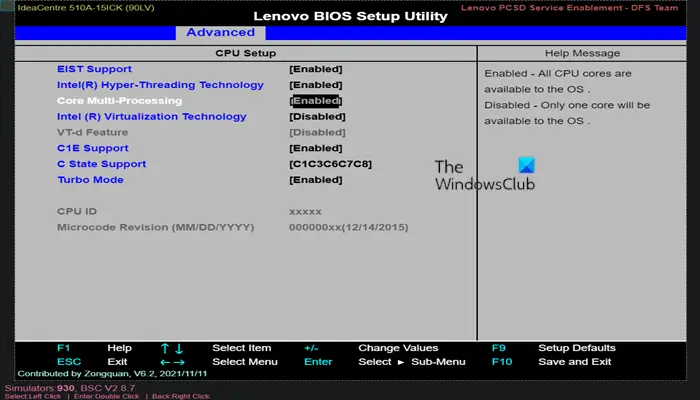
When adjusting settings like enabling or disabling hardware virtualization in BIOS, be sure what the settings will affect and the overall impact on your system. Changing settings incorrectly can lead to system or hardware failure. If you don’t know what you want to change in the BIOS, it’s best you don’t change anything.
You can list computer BIOS settings using the GetBIOS PowerShell module and you can use the PowerShell Module SetBIOS to change BIOS settings from a Local or Remote computer.
How to change Boot Order or Priority in BIOS
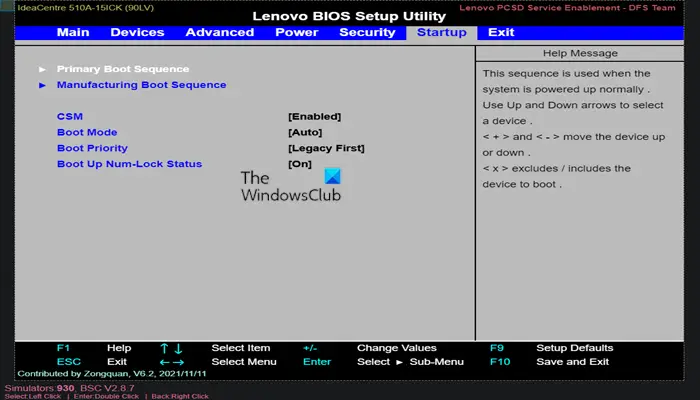
In BIOS, if you want to change what device to boot from or designate which device the computer will attempt to boot from first, you can configure the option youy want on the Boot tab. This is useful for booting from a disc or flash drive to install or repair an operating system. You’ll typically use the arrow keys to go over to the Boot or Startup tab to start this process.
How to create a BIOS password
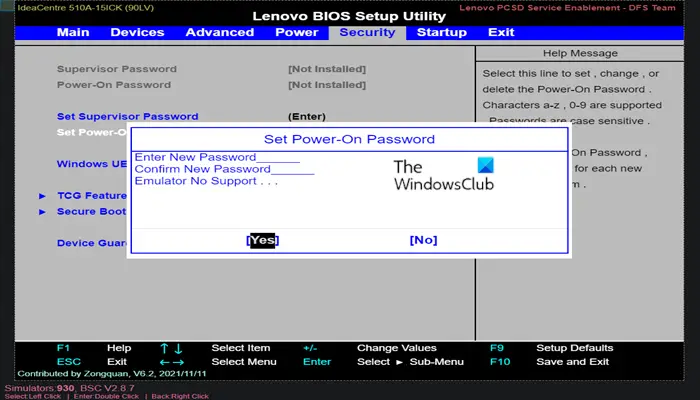
Under the Security tab in BIOS, you can create a BIOS password that will lock the computer from booting unless the correct password is entered. This adds an extra layer of protection, making your computer more secure.
The three types of passwords that can be set up in the BIOS of a Windows computer are:
- System or User password – Prevents an unauthorized user from using the computer.
- Setup or Admin password – Prevents an unauthorized user from accessing the BIOS or making changes to the settings in the BIOS.
- HDD password – Prevents an unauthorized user from accessing the HDD and booting into the operating system.
A laptop BIOS password is more secure than a traditional desktop password to help protect the data if the Windows device was stolen. BIOS passwords cannot be recovered. If you have forgotten one of the passwords that is set in the BIOS, resetting the CMOS or NVRAM helps reset the BIOS to factory default settings and reset the forgotten BIOS or UEFI password.
How to change System Date and Time in BIOS
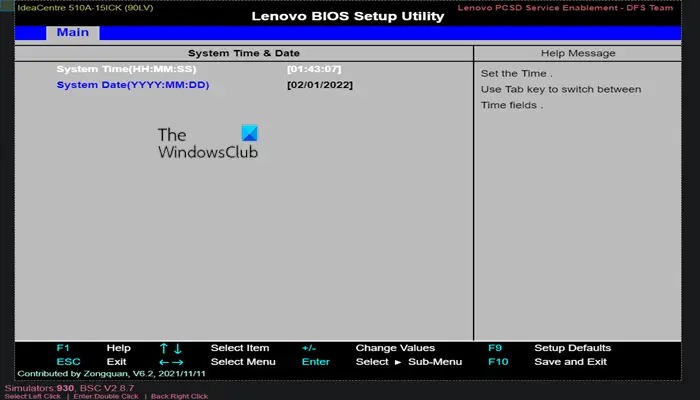
The BIOS clock will dictate your Windows clock. If you replace your computer’s battery, your BIOS clock will most likely be reset. If the date and time is resetting to an old date or the wrong time, the CMOS battery is bad and needs to be replaced.
How to change Fan speeds and System Voltages in BIOS
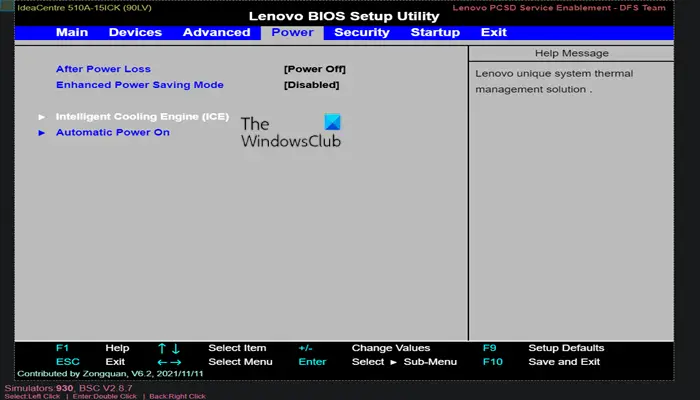
These options are for advanced users only. In this menu on the Power tab, you can overclock your CPU, potentially allowing for higher performance; but consider is PC Overclocking really worth it? You can also control Fan Speed for the CPU and other various power options available in the BIOS for your system. You can configure these power options only if you are comfortable with your computer’s hardware.
How to Save BIOS settings and Exit
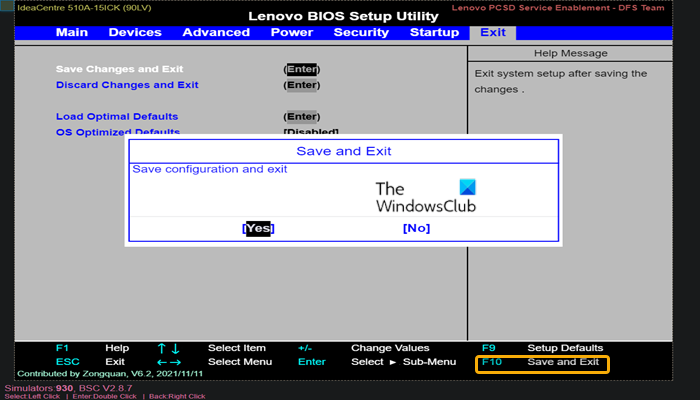
When you are done changing BIOS settings per your requirement, you will need to save and exit by using your BIOS Save and Exit key in order for your changes to take effect. When you save and restart, your computer will reboot with the new settings. You can check the BIOS key legend to see which key is the Save and Exit key or you can navigate to the Exit tab if available in your BIOS, select the Save Changes and Exit option, and then hit Enter twice.
Those of you who are interested can use the Lenovo BIOS Simulator Center at lenovo.com. You can see the BIOS configuration for each Lenovo model via your web browser.
I hope you find this post on how to use BIOS settings on Windows computers informative!
How do I enter BIOS on Windows?
To enter BIOS from Windows 11/10, do the following:
- Open Settings or click New notifications.
- Click Update & security.
- Click Recovery.
- Click Restart now. The Options menu will now be displayed.
- Select Advanced options.
- Click UEFI Firmware Settings.
- Choose Restart. This displays the BIOS setup utility interface.
How can I enter BIOS if F2 key is not working?
If F2 key is not working when you try to enter BIOS Setup on your Windows 11/10 PC, do the following:
- Go to Advanced > Boot > Boot Configuration.
- In the Boot Display Config pane, Enable POST Function Hotkeys Displayed.
- Enable Display F2 to Enter Setup.
- Press F10 to save and exit BIOS.
Happy computing!
Leave a Reply